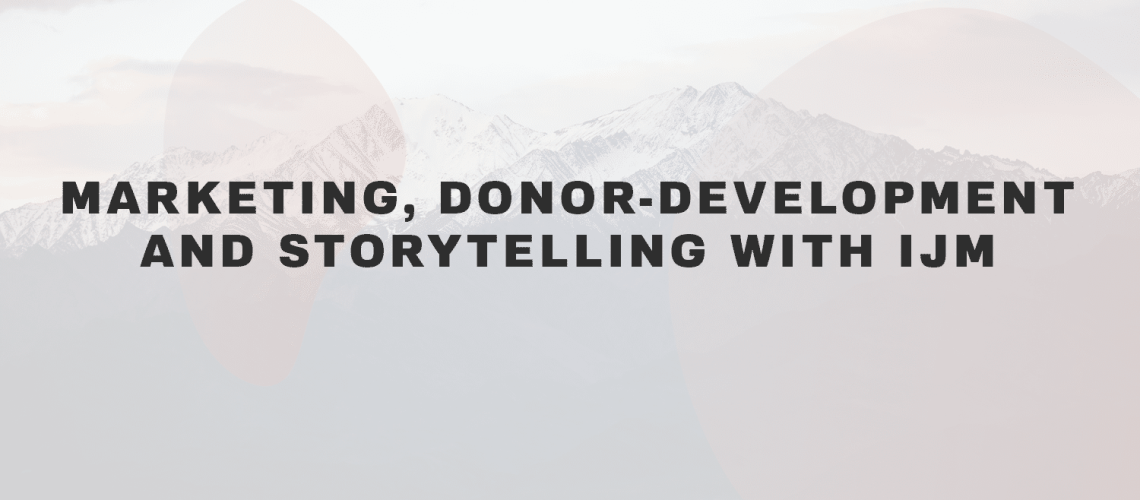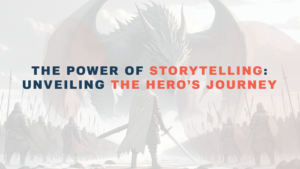A couple of weeks ago we had Brittany Baker, Regional Director of Marketing for IJM, on the podcast and she went into pretty granular detail on how marketing, donor-development, and storytelling with IJM is handled. It was an incredibly insightful episode and over the next handful of weeks, I’ll be exploring the topics we discussed in that episode in greater detail. Brittany shared so much great content that we’re going to break these follow-up articles down into a 4-part series.
For those who don’t know who IJM is, here’s a little run down. IJM, or International Justice Mission, is a global organization working to “end slavery in our lifetime.” IJM is working to end violence against the poor and oppressed, specifically people who are living in poverty that are often victimized and living outside of the protection of the law. They are fighting human trafficking and slavery all over the world. Alongside Charity: Water, World Vision, and Compassion International, they are viewed among many in the ministry sector as an organization worth paying attention to when it comes to marketing, donor-development, and storytelling. In my opinion, they have one of the most talented creative directors in the ministry space, Vera Leung and the content they produce and regularly share is of incredible quality. Brittany shared a lot of great insights during our call, but today we are going to discuss storytelling at scale. You can listen to Brittany’s episode HERE. Let’s get into it and discuss marketing, donor-development, and storytelling with IJM!
Storytelling At Scale
Within the first couple of minutes of the episode, Brittany shares what she is most excited about with IJM, and her excitement centers around Esther’s story. An end of year campaign that IJM ran for all of November and into December last year. “For the first time, IJM is telling a 2-part video story that is paired with a 5 episode podcast highlighting Esther’s story.” This was a new and experimental storytelling strategy they employed at the end of last year and I’m really excited to break this strategy down for ministry leaders because it opens up opportunities for storytelling at scale that are really exciting for ministry leaders. Lets first explore the campaign output schedule.
IJM tells a single story throughout a campaign that lasts an entire month. In fact, the content output went a little beyond a month. Esther’s story is a single child’s story. There are other elements to the story that involve other people, but the focus is on Esther. Throughout the campaign, IJM broke the content down into a two-part video and a 5 episode podcast. For each part of the video, there was a trailer posted along with the video on Instagram TV. Each podcast episode had an accompanying Instagram post sharing the episode release. There were 18 Instagram stories shared during the campaign highlighting Esther’s story and a handful of emails. I’m not sure how many emails were sent, and this list does not include their Facebook, Twitter, and Medium posts. If you total up just their Instagram posts you’re looking at a piece of content every other day, all for a single child’s story.
Do you have 12 stories you can tell this year?
Let’s think about that from a content production perspective. How many of us are scratching our heads trying to come up with new and creative content every single day for our ministries? It can be overwhelming, but IJM has come up with a strategy to build an entire campaign around a single story that can last an entire month. This means long term, that IJM, or any other ministry for that matter, could create enough content to share every other day for an entire year, with only 12 stories! If you add educational content, informational content sharing ministry updates, and user-generated mobile device content from your partners in the field you’re looking at potentially multiple posts per day and true content at scale.
The consistency needed to be successful in social media is demanding. It’s one of the biggest pain points most ministry leaders I talk with share, and many have almost given up because they aren’t seeing traction. What’s the point, right? Why would I spend time and energy on social if it’s not bringing any results?
IJM’s Esther campaign may hold the key to content at scale, especially for small and medium-sized ministries that can’t afford to tell stories with high production value on a consistent basis. Ministry leaders often share with us how they are scared that they can’t come up with enough content to get the word out on social, and so they continue to stick with old and outdated communication strategies for fear they can’t create content at scale on new media (Please don’t hear me say you should ditch your old communication strategies). Most ministries we work with have a donor base that tends to be an older generation. That generation likes newsletters and emails so don’t give up on those forms of communication. But, as you think about your communication strategies, and if you follow this strategy, it would not be too difficult or exorbitantly expensive to create content at scale. Do you think you can come up with 12 stories of life change?
Do you think you can find 12 individuals per year that have been experienced the life-changing work of Christ through your organization? I’m fairly confident that every single ministry we’ve ever talked with has 12 single stories of life change per year. Now that we have a clear plan for story rollout, we can talk touchpoint to financial ask ratios.
How Many Touchpoints Before Each Ask?
One of the big questions that come up in any ministry marketing and fundraising strategy is centered around touchpoints to financial ask ratios. How many times should I communicate with my donor before I make an ask? Some researchers will tell you to ask every single time, some say for every 7 touchpoints you should have 1 ask, and other recommendations sit at the 1-10 mark. This is a difficult question to ask and there are a lot of variables at play. Every ministry is unique and your strategy will need to fit the unique variables that exist within your ministry. I asked Brittany how they handle this question and here is what she said:
“We are still working on that, and we definitely can get better (for any small and medium-sized ministry out there just trying to make it, isn’t it encouraging to know that IJM is still just trying to figure this out as well?), but right now we try to go 3-6 weeks after an initial gift before we make a financial ask. We do try to get a second gift from that donor by the end of that 6-week window. Data is telling nonprofits that if you can get a second gift in that 6-week window then the lifetime value of that donor significantly goes up.”
So, although that answer doesn’t give a direct answer to a ratio, it does give us insight into how IJM thinks about their donors. The answer is going to depend on the individual donor. This means it’s incredibly important that you have communication strategies that are specifically targeted for different situations. A potential donor that signs up for a newsletter after hearing about IJM for the first time needs to be communicated with differently than a first time donor that signs up for monthly donorship right off the bat.
For some practical takeaways, here’s where I recommend organizations settle. If you’re meeting a potential donor face to face, make the ask every single time. If you’re marketing and sharing stories on new media, the ratio should probably be more in the 1-10 ratio range. Now, that’s assuming you’re following some sort of storytelling at scale content output strategy like the one I highlighted earlier in this article. Ministries need to start telling their stories more often, but with that increased storytelling approach the ask should also come down in regularity. We want to encourage storytelling for the sake of God’s glory, rather than raising funds. If you can increase the regularity with which you tell stories, you will increase trust in your ministry, and the result will be increased brand loyalty, and ultimately brand equity.







